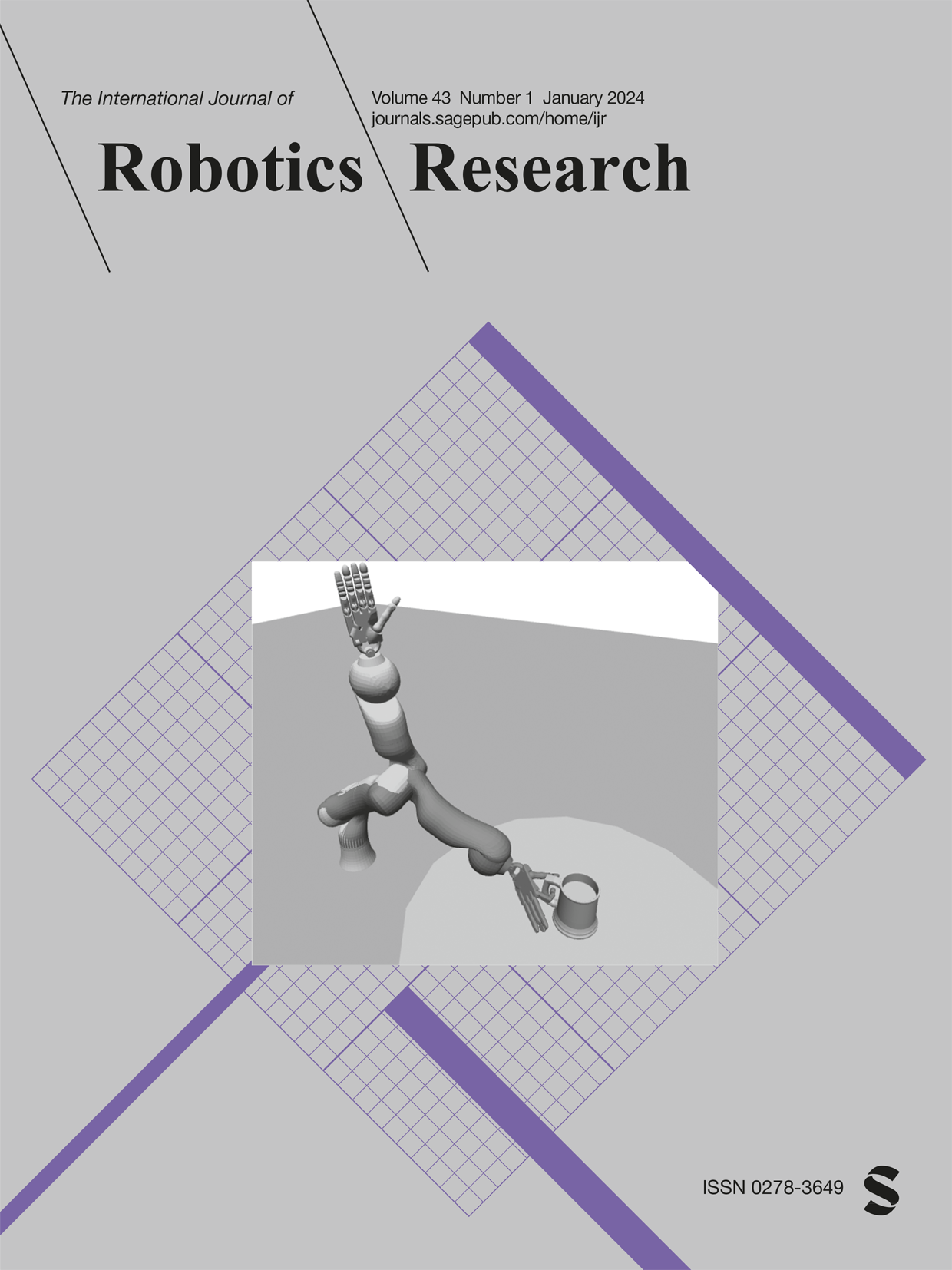基于非平稳高斯过程的自适应机器人信息采集
IF 5
1区 计算机科学
Q1 ROBOTICS
引用次数: 0
摘要
机器人信息采集(Robotic Information Gathering, RIG)是机器人(团队)在机器人实施体约束下,如何收集信息数据以高效地建立未知目标函数的精确模型的基础研究课题。RIG有许多应用,包括但不限于自主勘探和测绘、3D重建或检查、搜索和救援以及环境监测。RIG系统依靠概率模型的预测不确定性来识别信息数据收集的关键区域。具有平稳核的高斯过程在空间建模中得到了广泛的应用。然而,现实世界的空间数据通常是非平稳的——不同的位置不具有相同程度的可变性。因此,预测不确定性不能准确地反映预测误差,限制了RIG算法的成功。我们提出了一类非平稳核,称为注意核(attention Kernel, AK),它具有简单和鲁棒性,可以将任何现有核扩展为非平稳核。我们在高程映射任务中评估了新核,其中AK比常用的平稳核和领先的非平稳核提供了更好的精度和不确定性量化。改进后的不确定性量化可以引导下游信息规划者在高误差区域周围收集更多有价值的数据,进一步提高预测精度。现场实验表明,该方法可以引导自动地面车辆(ASV)在空间变化显著的位置优先收集数据,使模型能够表征显著的环境特征。本文章由计算机程序翻译,如有差异,请以英文原文为准。
Adaptive Robotic Information Gathering via non-stationary Gaussian processes
Robotic Information Gathering (RIG) is a foundational research topic that answers how a robot (team) collects informative data to efficiently build an accurate model of an unknown target function under robot embodiment constraints. RIG has many applications, including but not limited to autonomous exploration and mapping, 3D reconstruction or inspection, search and rescue, and environmental monitoring. A RIG system relies on a probabilistic model’s prediction uncertainty to identify critical areas for informative data collection. Gaussian processes (GPs) with stationary kernels have been widely adopted for spatial modeling. However, real-world spatial data is typically non-stationary—different locations do not have the same degree of variability. As a result, the prediction uncertainty does not accurately reveal prediction error, limiting the success of RIG algorithms. We propose a family of non-stationary kernels named Attentive Kernel (AK), which is simple and robust and can extend any existing kernel to a non-stationary one. We evaluate the new kernel in elevation mapping tasks, where AK provides better accuracy and uncertainty quantification over the commonly used stationary kernels and the leading non-stationary kernels. The improved uncertainty quantification guides the downstream informative planner to collect more valuable data around the high-error area, further increasing prediction accuracy. A field experiment demonstrates that the proposed method can guide an Autonomous Surface Vehicle (ASV) to prioritize data collection in locations with significant spatial variations, enabling the model to characterize salient environmental features.
求助全文
通过发布文献求助,成功后即可免费获取论文全文。
去求助
来源期刊
CiteScore
22.20
自引率
0.00%
发文量
34
审稿时长
6-12 weeks
期刊介绍:
The International Journal of Robotics Research (IJRR) has been a leading peer-reviewed publication in the field for over two decades. It holds the distinction of being the first scholarly journal dedicated to robotics research.
IJRR presents cutting-edge and thought-provoking original research papers, articles, and reviews that delve into groundbreaking trends, technical advancements, and theoretical developments in robotics. Renowned scholars and practitioners contribute to its content, offering their expertise and insights. This journal covers a wide range of topics, going beyond narrow technical advancements to encompass various aspects of robotics.
The primary aim of IJRR is to publish work that has lasting value for the scientific and technological advancement of the field. Only original, robust, and practical research that can serve as a foundation for further progress is considered for publication. The focus is on producing content that will remain valuable and relevant over time.
In summary, IJRR stands as a prestigious publication that drives innovation and knowledge in robotics research.

 求助内容:
求助内容: 应助结果提醒方式:
应助结果提醒方式:


